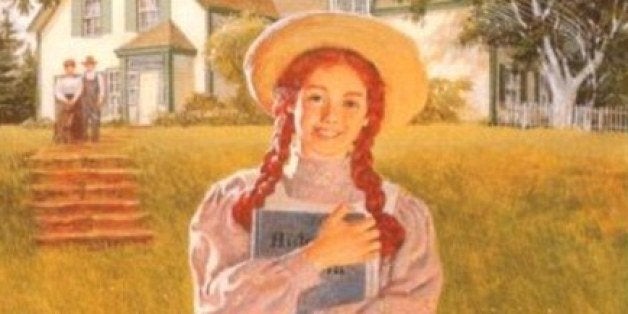
Like all great children’s book heroines, Anne Shirley is just a bit odd. Okay, she’s very odd. Her crazy imagination and flowery diction differentiate her from most children you’re likely to meet, and despite a certain recent edition’s cover art, her hair is defiantly red. But somehow, her kooky adventures have spoken to generations of children, including me. Though in some ways L.M. Montgomery’s lesser-known heroine Emily Starr was more relatable to me as a kid -- shy, withdrawn, bookish, and driven by professional ambition -- lighthearted Anne is almost universally irresistible.
Anne is fearless. Anne is unpredictable. Anne is funny, though often unintentionally. Anne is smart, but not snobbish. Anne is so warm and caring you can feel it through the page. (And, cards on the table, her love interest Gilbert was my first literary crush.) Watching her grow up, stumbling from adventure to misadventure, was never dull. What’s more, it managed to teach young readers all about life without ever seeming preachy. Anne isn’t a model girl, but she’s figuring it out. Just like we all were at her age. Here are 11 of the most important lessons Anne Shirley taught me about life, love, and growing up.
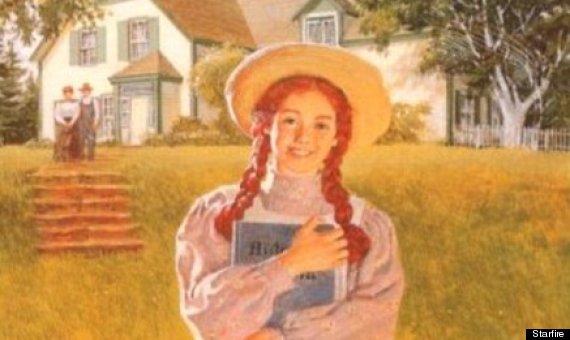
1. Accept yourself the way you are. When we first meet Anne Shirley, she has self-esteem issues (we sometimes imagine these didn’t exist until “Am I Pretty or Ugly” YouTube videos). She hates her red hair, her freckles, her sharp elbows, and her name -- which, if it can’t be changed from "Anne" to "Cordelia," she at least insists should be spelled with an “e.” She even resorts to buying dubious beauty products to fix her appearance, but a mishap with hair dye scares her straight (apparently green hair is even worse than red). Over the course of "Anne of Green Gables," and even more so throughout the next few books tracing her journey to adulthood, Anne learns that changing your looks to fit your expectations is a lot harder than changing your expectations to fit your looks. Whether she’s taking consolation in her “nice nose” or convincing herself that her red hair is darkening into a lovely auburn, bit by bit Anne finds the beauty in her carroty locks and her freckled face. For young girls who are so often surrounded by messages that they should change their hair, body, and even skin to fit the images they see in the media, Anne’s journey to self-acceptance is a reminder that we can find beauty in all forms, even in our own.
2. Be a good friend. Anne’s friendship with Diana Barry, her neighbor, fills a special place in Anne’s soul. At the beginning of the book, alone and starting her life anew at Green Gables, Anne seems fixated on the idea of a bosom friend above all. Though she ultimately makes a number of friends in Avonlea, in college, and throughout her life, there is no question that her first best friend is the most special. Every girl who’s ever had a true-blue best friend- the kind who won’t drop you because the popular girls started inviting her to sleepovers - knows such a relationship is invaluable. A best friend is the first person to love you without any obligation; they’re your first partner in life. As Anne exclaims when Diana first expresses her love for her, “Why, Diana, I didn't think anybody could love me. Nobody ever has loved me since I can remember.” But it’s easy to see why Diana loves Anne, who, while frequently flighty, is a devoted and loyal friend. Anne even prefers to share a treat with Diana because “The other half will taste twice as sweet to me if I give some to her.” For a sweets-craving kid, that’s love.
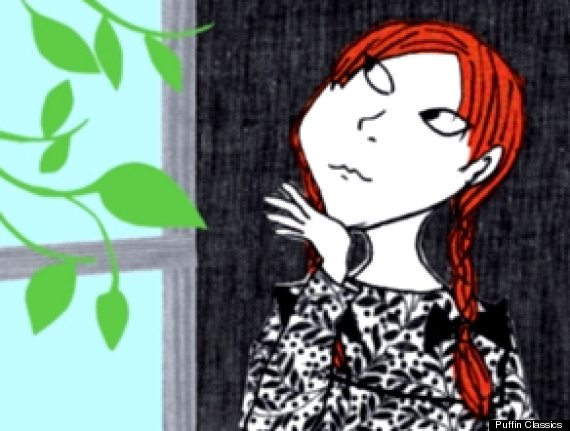
3. When the world disappoints you, just compensate with your imagination. Anne’s life isn’t always quite what she wants it to be. Though she’s grateful for her home, her friends, and her beautiful Prince Edward Island, it’s hard for her to not compare her life to the life of a princess named Cordelia with raven locks and a “clear ivory pallor” and simply despair at how meager hers looks in comparison. But these deprivations, as Anne would say, also provide more scope for imagination: “That is one consolation when you are poor - there are so many more things you can imagine about.” Conjuring up a velvet-draped bedchamber, an elegant muslin dress with puffed sleeves, or some other pretty dream costs far less than the reality - and gives the creative faculties a workout. Plus, if you want to name yourself Geraldine next week instead of Cordelia, you won’t need to fill out any extra paperwork.
4. Don’t try too hard to fit in. For a girl who once said “I'd rather look ridiculous when everybody else does than plain and sensible all by myself,” Anne certainly seems to march to the beat of her own drummer. Though she’s often painfully desirous of fitting in with her peers - of having the same stylish dresses and ordinary-colored hair - she doesn’t mind that her grandiloquent style of speaking or her lavishly imaginative games mark her out as quite odd amongst her young friends. When you’re surrounded by kids who laugh at you for having off-beat interests or a unique style, Anne’s unabashed strangeness is a reassuring reminder that it’s okay to be different. And it doesn’t hurt to see her friends and neighbors start to embrace her on her own terms.

5. Don’t be afraid to make mistakes. Anne is a classic experiential learner. Perhaps half of her charm is her willingness to try anything once; she lacks the part of her brain that might say “Oh, better not, Marilla won’t be pleased” - which results in some delightful stories. But, as Anne points out, she never makes the same mistake twice. (Small comfort to Marilla, who retorts, “I don't know as that's much benefit when you're always making new ones.”) At first, Anne is all catastrophes and accidents, but slowly the mistakes get smaller, and by the end, Anne is quite a graceful and accomplished young lady. A mistake is never fun to make at the time, but it’s one you won’t have to make later - after all, there’s no better way to learn not to mess up a recipe than to accidentally put liniment into a cake instead of vanilla, rendering it completely inedible.
6. Embrace sincerity. Anne is many things, but she is rarely sarcastic or ironic, especially as a child. While the sweetness can be cloying at times, her unwillingness to hide behind detached irony or snark is often refreshing. Sometimes her unironic embrace of sentimental poetry or her impetuous openness with her emotions may set her up for ridicule, but she puts herself out there anyway. And when she does hide her true feelings, as when she refuses to tell Gilbert she’s forgiven him for poking fun at her hair, she hides them so thoroughly even she believes Gilbert is still her nemesis. Also, Anne’s penchant for laughter is a reminder that snark isn’t the only form of humor.
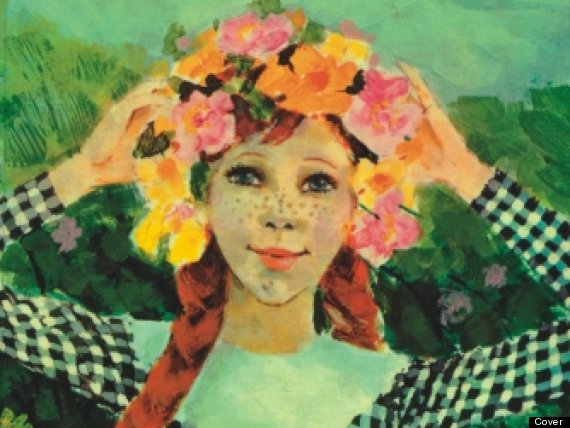
7. Enjoy the anticipation of a good time - it’s half the fun. "'Oh, Marilla, looking forward to things is half the pleasure of them,' exclaimed Anne. 'You mayn't get the things themselves; but nothing can prevent you from having the fun of looking forward to them.'" Anne’s boundless optimism and great expectations do leave her frequently disappointed, but it’s clear that her attitude ensures a life full of laughter and hope. What’s more, science has proven her correct on this front: A recent study showed that most of the mental health benefit of a vacation comes from planning and anticipating it rather than experiencing the vacation itself. Anticipating a good event allows us experience pleasurable emotions about it far in advance, rather than simply enjoying the few hours or days that the event lasts. And paying the cost of the occasional disappointment, as Anne points out, doesn’t take away the days of pleasurable expectation that came before.
8. Make the most of your education. All right, how many of us would have said “recess” was our favorite part of school? Most kids loathe getting up early, shouldering a backpack, and heading off for a full day of listening to lectures and filling out worksheets. But for Anne, the opportunity to learn is, if not a constant joy, still a vital part of her life. At first, school is just a place for her to gossip over pooled lunches with her classmates, but as she catches up academically, she becomes a dedicated scholar, then a teacher, and even attends college - hardly a universal experience at her time. Her conversation is peppered with snatches of poetry and historical and literary references that remind us how her intellectual work has paid off in a depth of knowledge. Inspiring!
9. Don’t miss out on true love by expecting a fairy tale. As "Anne of Green Gables" ends, we see a hint of the blossoming romance between Gilbert and Anne that culminates two books later in "Anne of the Island." In the final pages of "Green Gables," 16-year-old Anne lets go of a grudge she’s held against him for years, and they finally begin a real friendship. But later, Anne can’t bring herself to admit that their close, chummy relationship is far more than a friendship. Weaned on sentimental romances, Anne still expects her great love to be tall, dark, handsome, melancholy, poetic. Roguish Gilbert simply doesn’t fit the bill. Anne almost makes the ultimate mistake of marrying a rather generic tall, dark, and handsome type before she realizes her love for him was illusory - based entirely on her childhood dreams rather than the reality of their courtship. When Anne finally admits to herself that she has loved Gilbert all along, it’s almost too late. Hard to believe she almost gave up her true love because he wasn’t her “type”! It’s a tear-jerking reminder to open our eyes to what’s in front of us rather than living life in accordance with our fantasies.
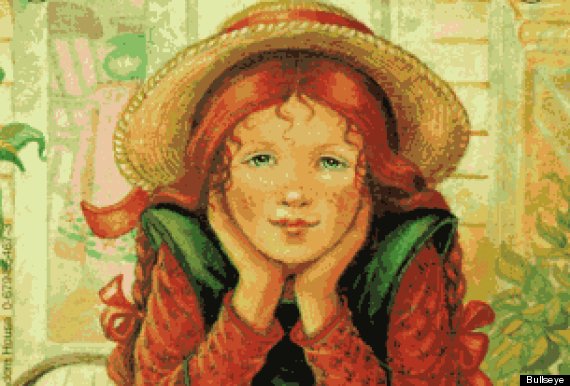
10. Learn to deal with the real world. Over time, Anne finds living in a dream world is increasingly impractical. She can’t linger all afternoon in a favorite woody spot when she has promised to be home to help Marilla, and she learns that setting up elaborate fantasy tableaux at the pond might lead to a near-drowning. At the end of "Green Gables," Anne offers to give up another dream, attending college, in order to stay home with an aging Marilla and save the farm. Montgomery writes that “She had looked her duty courageously in the face and found it a friend—as duty ever is when we meet it frankly.” She’s matured immeasurably from the impulsive tween we met at the beginning of the book, and is finally able to truly acknowledge and deal with the unpleasantness of reality. Though Anne’s impractical dreaminess was endearing as a child, her willingness to accept adult responsibilities reminds us that we can’t put off growing up forever. Life is as much about hard work and fulfilling our duties as it is about fun and spontaneity.
11. But never stop dreaming. The fact that Anne is all grown up doesn’t mean she’s lost all of her imaginative edge, of course. She wouldn’t be Anne if she didn’t still foster a love of the fantastical and an undying hope that the future holds glorious unknown things. “I wonder how the road beyond it goes—what there is of green glory and soft, checkered light and shadows—what new landscapes—what new beauties—what curves and hills and valleys further on," she rhapsodizes after giving up her college scholarship. The prosaic year of teaching and domestic duties ahead of her can’t take away her dreams of a life filled with beauty. Even her predilection for believing in fairies and goblins never really vanishes. Anne shows us that while hard work and responsibility are needed to keep our lives and our families lives together, hope and imagination are needed to keep them happy and fulfilled. There aren’t many better guides to a good life than that.
